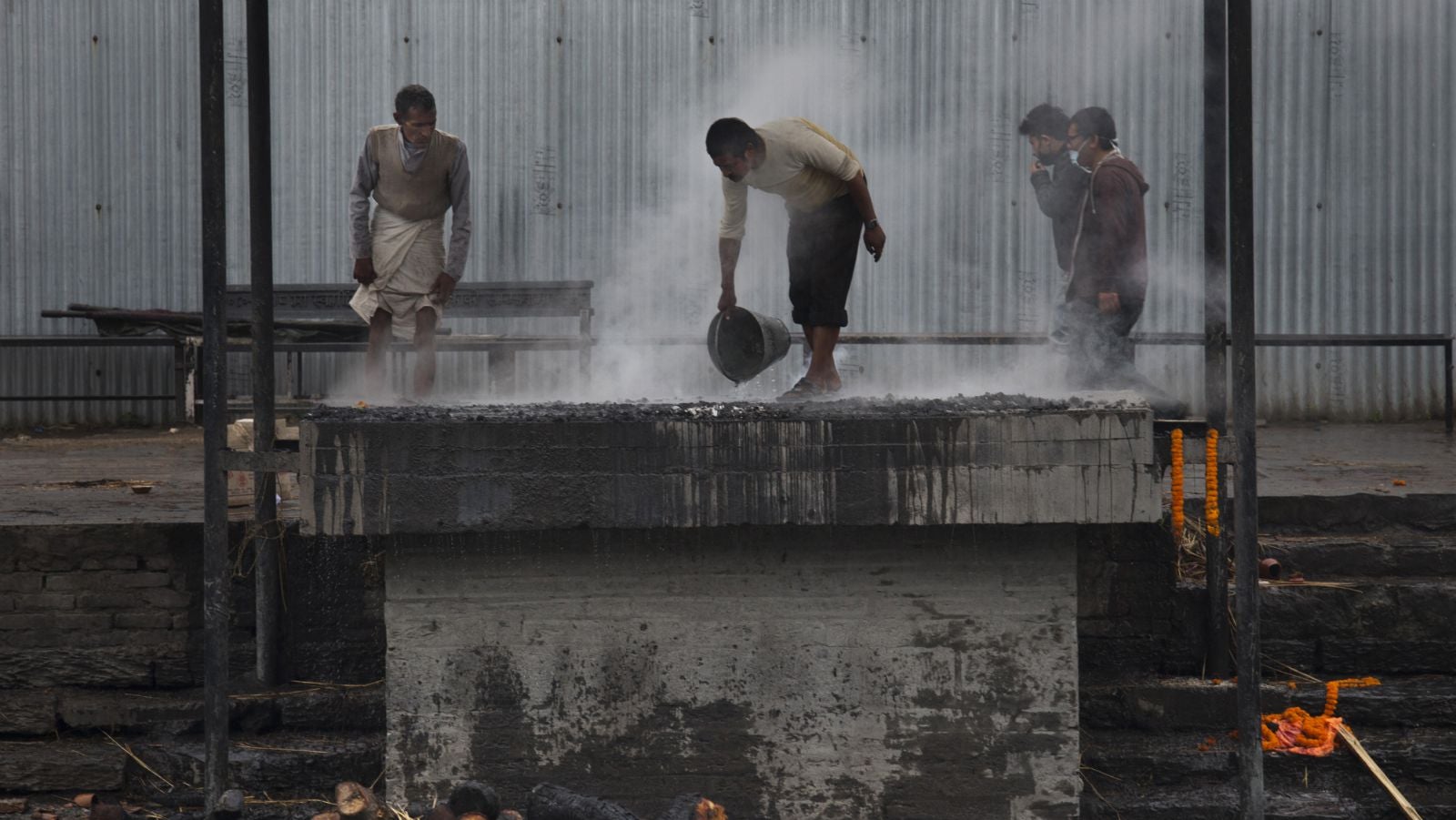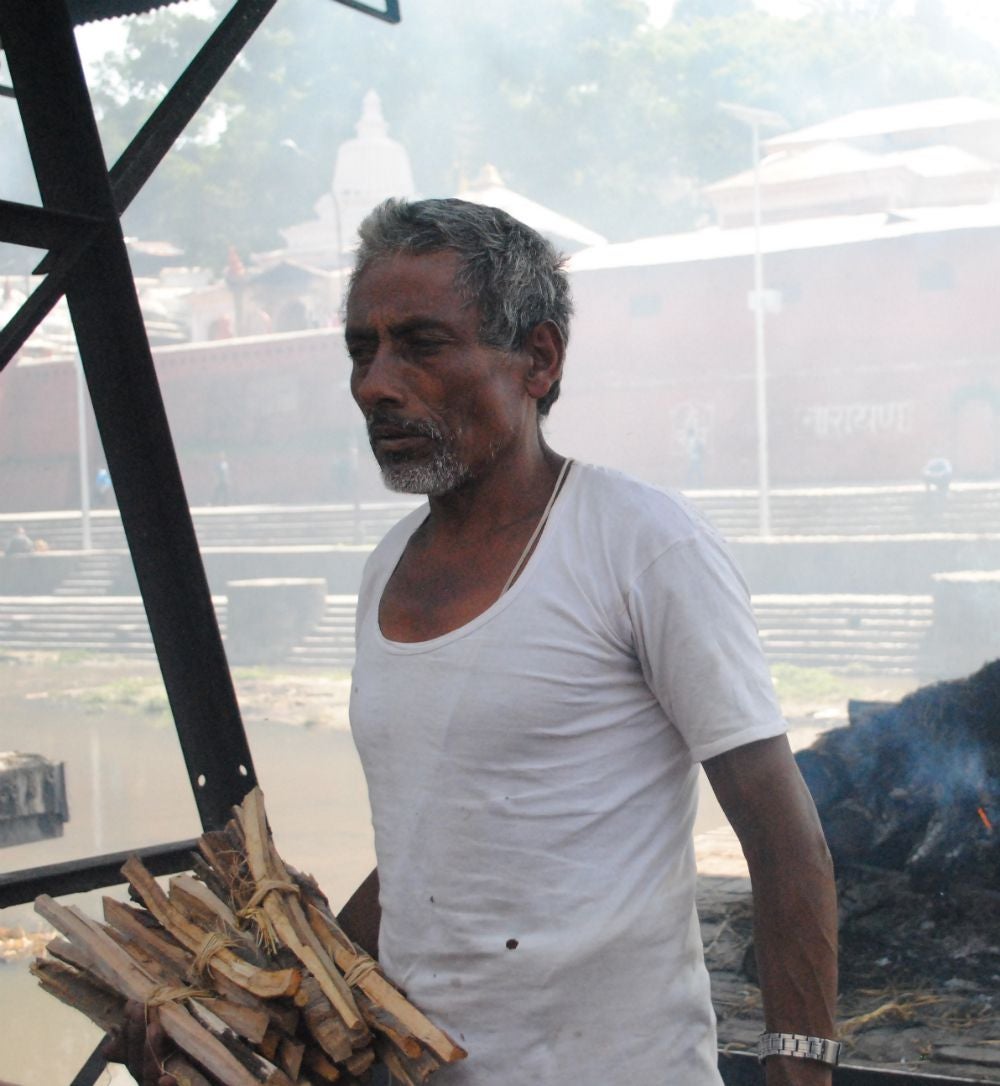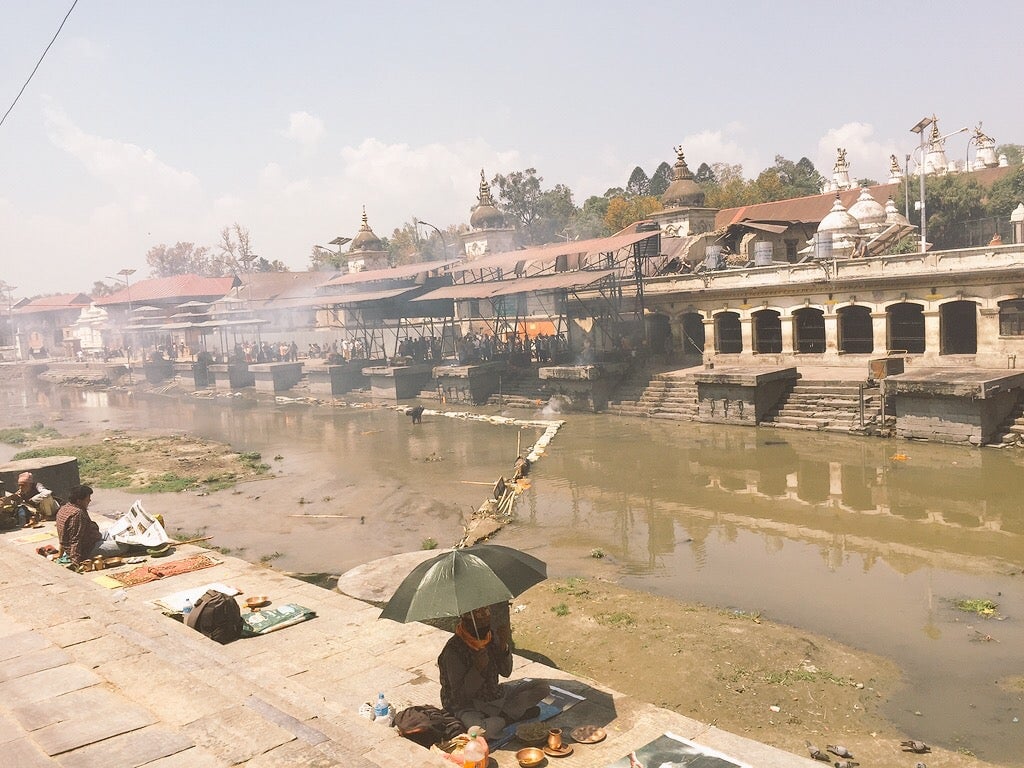A Kathmandu crematorium is struggling to cope with the earthquake’s dead
KATHMANDU—The blackened funeral pyres by the Bagmati river at Pashupatinath Temple, Kathmandu’s largest Hindu open air crematorium, haven’t stopped burning all week.


KATHMANDU—The blackened funeral pyres by the Bagmati river at Pashupatinath Temple, Kathmandu’s largest Hindu open air crematorium, haven’t stopped burning all week.
Grey-white pungent smoke billows in the air, flecks of swirling ashes slowly fall to the ground. Stray dogs and crows wander among grieving men queuing to have their heads shaved, as the Hindu funeral custom dictates.
Wreaths of decaying marigold, jute string, holy vermilion residue and half-lit incense sticks line the muddy steps of the Bagmati, a river now thickened with scorched wood and reeking debris.
Further downstream, on a sandbank at the river’s centre, barefoot men shovel through the waste to try and clear the river.
But all of this—and the overpowering stench of dead bodies—fades before the sound of human misery as wailing families continue to gather for cremations, a week after a 7.8 magnitude earthquake hit Nepal and left over 7,000 people dead.

On May 1, there were just nine funerals of earthquake victims, but still the temple’s staff and priests were struggling to cope after days of being overwhelmed.
“I have been working overtime this week since a lot of the staff have left to go to their villages and check on their homes,” said Kharga Adhikari, a temple worker, wiping the soot off his hands on his white dhoti.
Immediately after the earthquake, there were so many bodies—more than 300, by his estimate—and so many cremations that the crematory was forced to keep the pyres burning non-stop for two days.
“There were so many funerals back to back that we didn’t even clean all the pyres,” he said. “In the haste we couldn’t even use the mixture of rice, sesame and fresh grass that we usually sprinkle to purify the area after burning.”
Adhikari, who has worked here for 30 years, and his colleagues were overwhelmed.
“There was no space to accommodate so many bodies as we only have 11 pyres, and so makeshift pyres were made by families on the steps leading to the river,” said Purshottam Pochrel, a priest at the temple.
Those were the more fortunate of the deceased.
Another 50 to 60 unclaimed and unidentified bodies were burnt together soon after the earthquake, with no one to decorate them with garlands, or pray for their souls. “We just needed to get rid of them so we could accommodate more,” Pochrel said.
There were families who were forced to conduct their own ceremonies, after priests in the temple were inundated with mass funerals. “Imagine letting your loved one go without the proper blessings and rituals of Hinduism,” said the Brahmanand, or priest, shaking his head in disapproval.

With the resident staff struggling, volunteers and social workers offered a hand to help lift swollen bodies off crude bamboo stretchers; or to help move wood from the nearby storage shed to the pyres. Some came simply to console families and offer support.
Harisaran Poudyal, a coordinator at the temple office, governed by the Pashupati Area Development Trust, appreciates this show of solidarity, but there are some duties that only he must discharge.
“I have been working round the clock and haven’t even got a chance to go back to my home in [the nearby district of Sindhupalchowk] to be with my family,” he said, fanning himself with a newspaper in the cramped office space.
Sindhupalchowk is among the worst hit of Nepal’s mountainous districts, with over 2,500 dead. Poudyal displays a voluminous ledger with copious pages of entries—from the names of the dead and their family details, to a separate section on fire wood allocation.
“Usually we charge Rs2,500 (roughly $25) for wood, but the government instructed us to just give it for free. Now they want a whole breakdown of how much,” he explained.
There is a separate receipt book containing invoices, which had to be fed into a computer for verification.
“There is not enough manpower,” he said. “I have to do all this as well as act like a central information desk directing people to the bathroom or the wood shed and even to the exit.”
Turning to instruct a group that is cleaning up carelessly thrown plastic bottles, medical masks and latex gloves, he irately waves off a bystander waiting to ask him about the location of the toilet.
“It will take some time to get organised in the aftermath of approximately 2,000 funerals this week,” said Poudyal. “The scale [of the tragedy] is too much for us to handle.”
This article was supported by the International Reporting Project.